This article has been reviewed according to Science X's editorial process and policies. Editors have highlighted the following attributes while ensuring the content's credibility:
fact-checked
reputable news agency
proofread
Mud and debris are flowing down hillsides across California. What causes the slides?
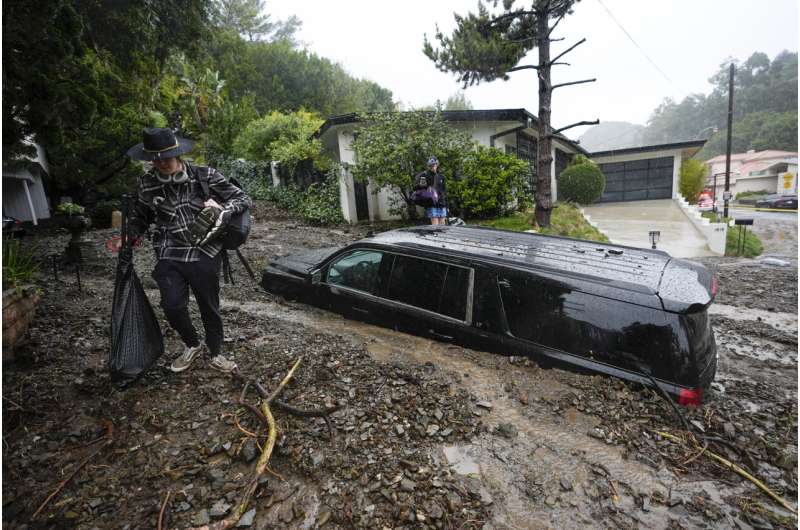
When rainstorms like this week's powerful atmospheric river hit California, the earth begins to move.
Water rushing down mountains and hills picks up soil and vegetation, as well as boulders, trees and cars that can become battering rams. In the blink of an eye, property is damaged or destroyed and lives are put at risk.
Commonly called mudslides, these dangerous torrents are usually referred to by geologists and first responders as debris flows, which the U.S. Geological Survey describes as fast-moving landslides capable of exceeding 35 mph (56 kph).
In Los Angeles alone during the current storm, crews responded to 475 slides as of Tuesday evening. Fire Chief Kristin Crowley, who toured hard-hit areas the previous day, said 35 buildings required inspections, five were deemed uninhabitable and there were seven where people were only allowed to remove possessions.
"Yesterday I was reminded of the pure force and magnitude with which a hillside can suddenly come down," Crowley said.
WHY IS CALIFORNIA PRONE TO MUDSLIDES?
The state has relatively young mountains from a geology standpoint, meaning much of its steep terrain is still in motion and covered in loose rocks and soil that can be sloughed off easily.
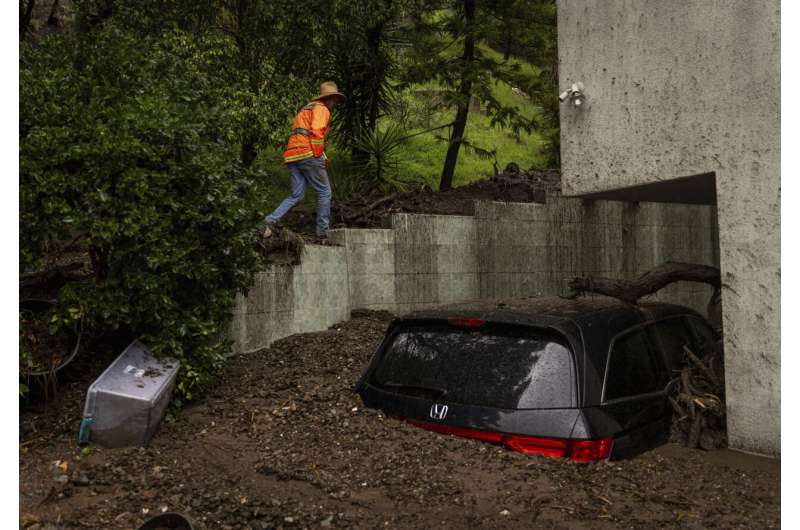
That's especially true when the ground is wet, according to geologists, and California was plenty wet from a pounding by a previous atmospheric river, a moisture plume that stretched far over the ocean to near Hawaii.
Downtown Los Angelesrecorded 7.03 inches (17.8 centimeters) of rain Sunday through Monday, the third-wettest two-day total since weather records began in 1877. Some other parts of the city got far more, including more than 12 inches (30.4 cm) in Bel Air.
WHAT ARE THE MOST VULNERABLE AREAS?
The areas most at risk are on or near hillsides that have burned in recent years, with little or no vegetation left to hold soil in place.
Burning vegetation and soil on a slope more than doubles the rate of water runoff, according to the California Department of Conservation, and there have been severe events over the years.
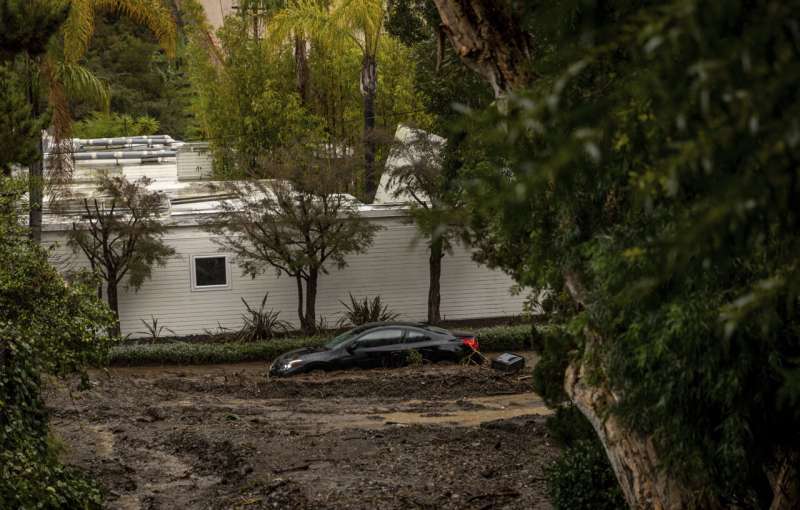
On Jan. 9, 2018, intense rain fell on a weeks-old wildfire burn scar in the mountains above Montecito on the Santa Barbara County coast, unleashing what residents remember as the " 1/9 Debris Flow." Huge torrents tore through the community, killing 23 people and destroying or damaging hundreds of homes.
In 1934 a storm over the Southern California mountains unleashed runoff so intense that 30 people were killed, more than 480 homes were destroyed and a nearly 60-ton (54-metric ton) boulder was pushed out of a canyon.
And on Christmas Day in 2003, rain over fire-scarred mountains unleashed a debris flow that killed 16 people who had gathered at a church facility in a canyon.
HOW CAN WE PROTECT COMMUNITIES?
One of the best ways to manage landslides is with debris basins—pits carved out of the landscape to catch material flowing downhill.
-
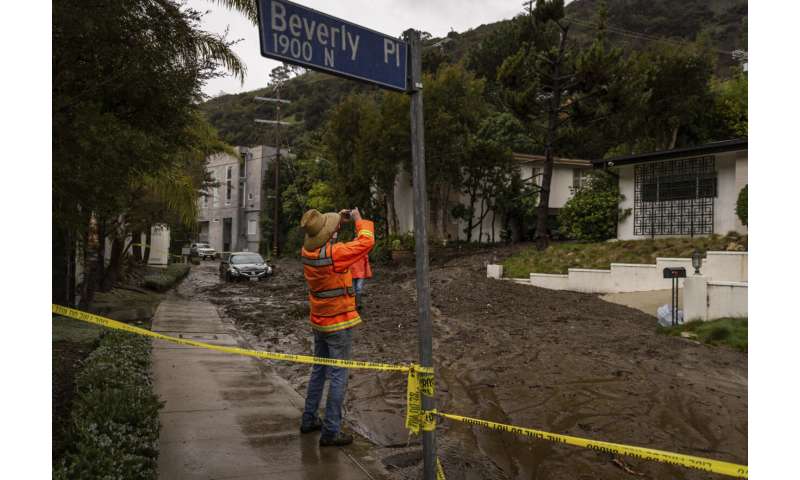
A geologist takes a picture while surveying a mudslide Tuesday, Feb. 6, 2024, in the Beverly Crest area of Los Angeles. Credit: AP Photo/Ethan Swope -
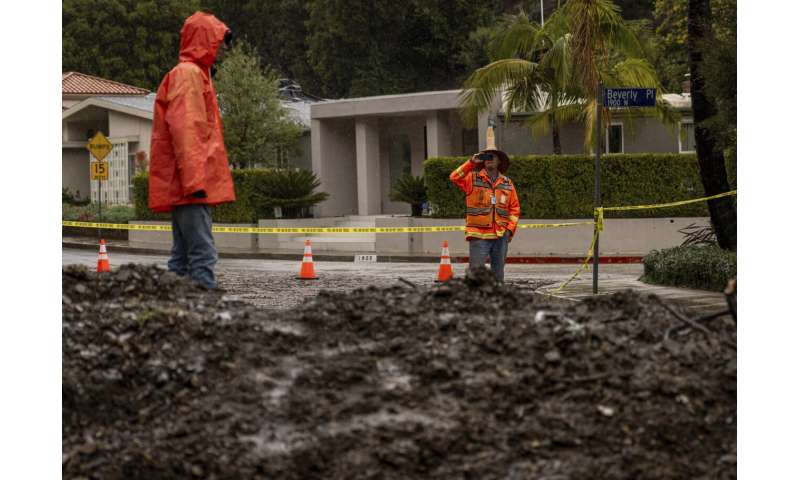
A geologist takes a picture while surveying a mudslide Tuesday, Feb. 6, 2024, in the Beverly Crest area of Los Angeles. Credit: AP Photo/Ethan Swope -
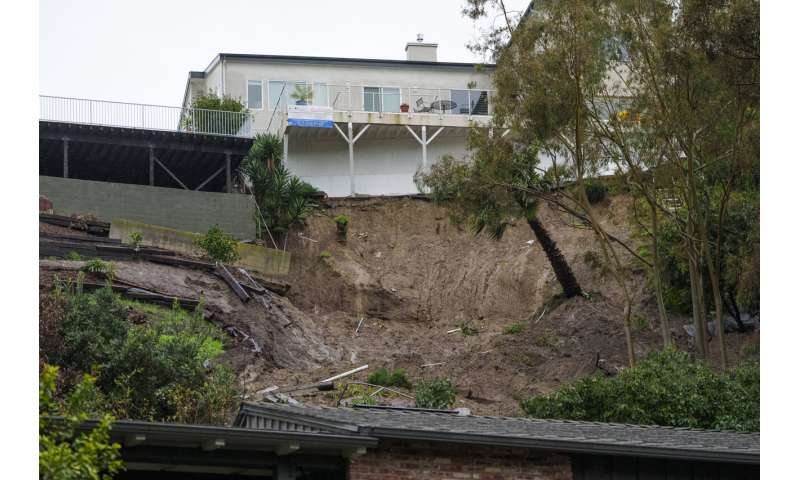
A mudslide scarred hillside is shown in the backyard of a home, Tuesday, Feb. 6, 2024, in the Baldwin Hills area of Los Angeles. The mudslide occurred early Monday morning, Feb. 5. Credit: AP Photo/Damian Dovarganes -
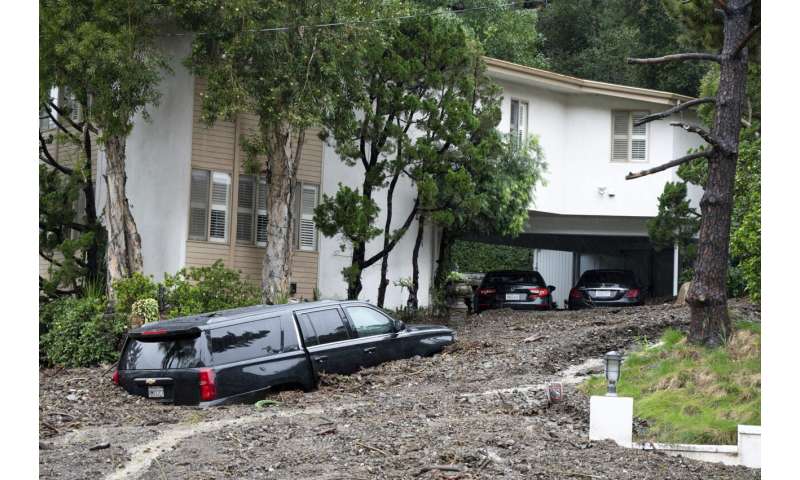
A large mudslide which occurred at the intersection of Beverly Drive and Beverly Place in the Beverly Crest area of Los Angeles damaged homes and cars on Monday, Feb. 5, 2024. Rain is expected to continue in Southern California over the next 12 hours. Credit: David Crane/The Orange County Register via AP -
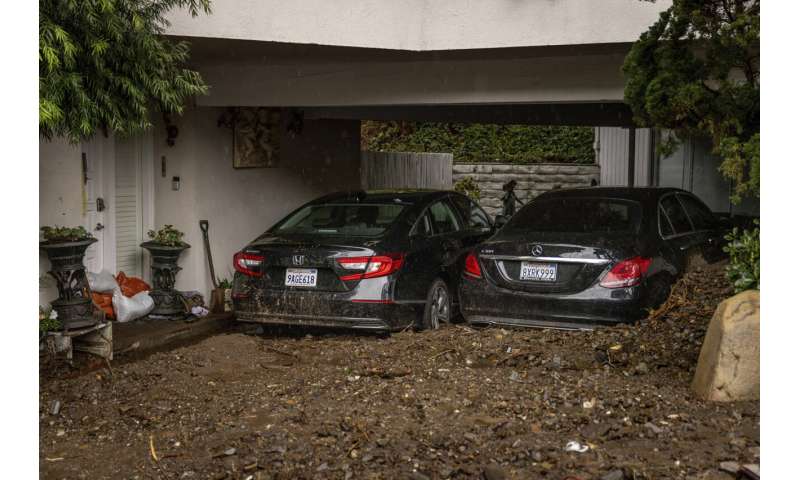
Cars sit submerged by a mudslide Tuesday, Feb. 6, 2024, in the Beverly Crest area of Los Angeles. Credit: AP Photo/Ethan Swope
Often located at the mouths of canyons, the basins collect debris while allowing water to continue downstream, according to Los Angeles County Public Works. This prevents blockages of the storm drain system but requires the removal of sediment from the basins, something that can take days or months depending on their size.
After the Montecito catastrophe, a nonprofit raised millions of dollars to bolster defenses by adding nets to catch debris. The installation was done in 2019, but a subsequent funding dispute led to their removal last year.
WHAT ELSE CAN BE DONE?
The California Geological Survey, a state Conservation Department division, studies the potential for post-fire debris flows and creates maps and reports that the state Office of Emergency Services can pass along to agencies for emergency response and alleviating problems in places where people and property may be in danger.
© 2024 The Associated Press. All rights reserved. This material may not be published, broadcast, rewritten or redistributed without permission.





















